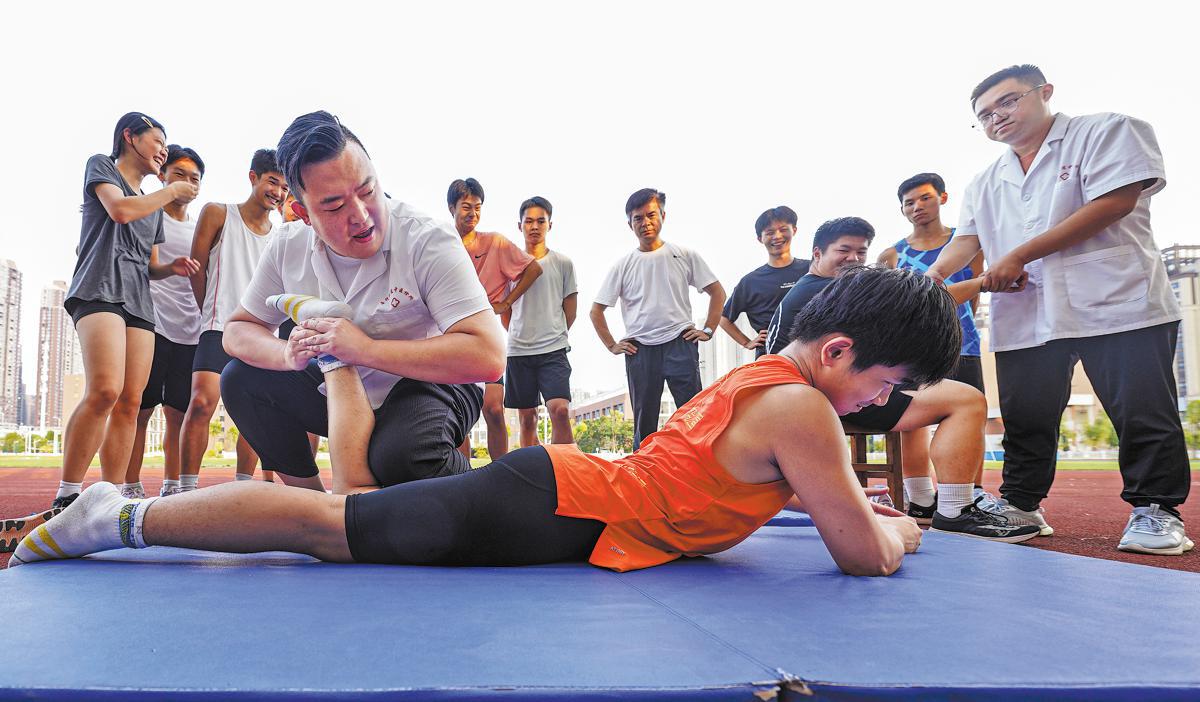From sprains to gains, sports enthusiasts take injuries calmly
Pain and recovery mark new chapter, not the end, for adrenaline seekers


Following my surgery and return to Beijing last March, I initially relied on a wheelchair or crutches for mobility. Approximately a month later, I commenced active rehabilitation at two hospitals in Beijing.
The hospital's rehabilitation center resembled a gym, with fellow patients who had undergone various surgeries as workout partners and a rehabilitation therapist in a white coat as my trainer. The facility housed typical gym equipment like treadmills and stationary bikes, along with advanced medical devices tailored for balance and muscle strength training.
Due to my injury and post-surgery movement limitations, the strength and stability of my left leg had significantly weakened. After nearly two months of training, I relearned to walk. The sensation of my trembling left leg making contact with the ground was immensely gratifying.
In recent years, an increasing number of sports rehabilitation clinics have emerged, transitioning from serving professional athletes to catering to sports enthusiasts and the general public.
According to a report by the Sports Rehabilitation Industry Alliance in 2023, out of the 430 million individuals in China with long-term exercise habits, around 100 million have suffered sports injuries. The data also indicated a notable increase in China's total sports rehabilitation service instances from 1.51 million in 2020 to 3.6 million in 2023, suggesting potential for further growth and advancement in the industry.























